An everyday tale of murder

Every Nazca booby Sula granti is a 'murderer' in human terminology. Read on.
The species is common here, often seen fishing around the boats in the harbour. Unlike a British gannet it tends to fly solo not in flocks, and nests in widely dispersed small colonies or as solitary pairs. Here is the adult, a very striking black and white bird:
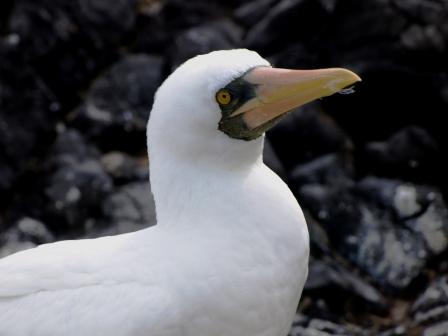
And here it is again, being photographed by an intepid explorer:
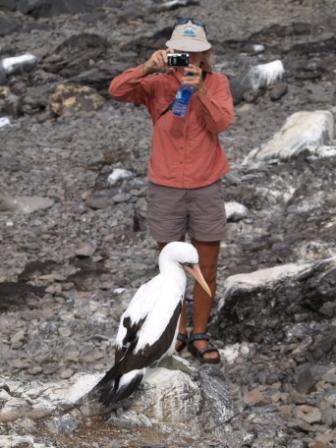
And an immature older chick, still being fed by its parents and unable to fly, but getting its adult plumage:
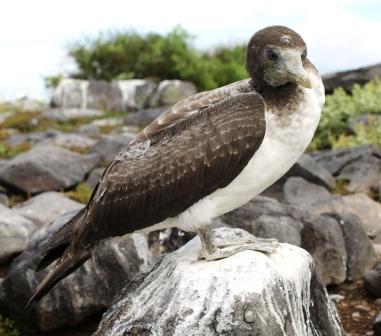
Here is a younger chick still dressed in down:
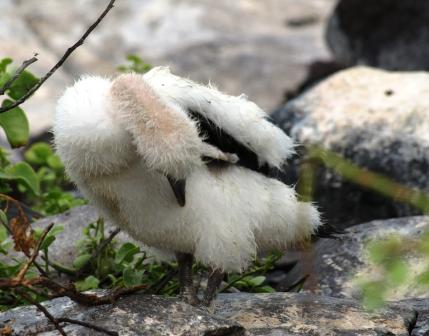
An ugly duckling indeed - and a recent murderer. Every female Nazca lays two fertile eggs each year. Usually both hatch. The mother will feed both. But only one ever survives. The first hatched always (hence 'obligate') physically pushes its younger brother or sister out of the nest, with violence, under the gaze of the mother who never interferes. The expelled chick then starves (hence 'siblicide') right there in front of its mother. Bizarre or what?
The ecological explanation for this is that it is an insurance policy. Sometimes the firstborn chick dies or is predated before the second chick hatches, or before it gets a chance to kill its sibling. In this event the mother feeds the second chick and it survives. This strategy ensures that one chick almost always survives. There is often not enough food for two chicks to reach adulthood, in which case both might die so 'guaranteeing' the survival of one is a sound strategy. But grisly!
We went on a trip boat for a couple of days. The crew had rescued a tiny Nazca chick found floating out at sea. They have hand-reared it (forcing raw fish down its throat with your fingers - they cannot feed themselves - but better than regurgitating half-digested fish into his throat as his mother would have done!) and it accepts the Captain as its mother. He can stroke it, and pick it up. Everyone else approaching gets razored by a swift swipe or stab with a very sharp bill. All the crew had battle scars. Here he is, standing on 'his' corner of the catamaran:
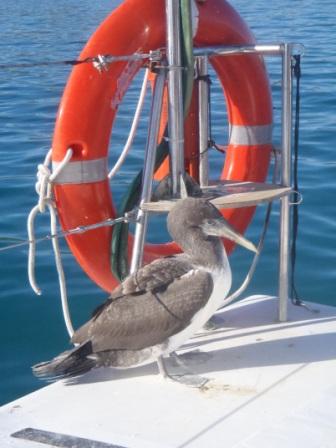
Boat operations require frequent passage past this point by the crew who were often lacerated as they passed. But they love him. He's been with them for three months now and is just beginning to learn to fly. He can swim (with a string tied round his leg so he can't float away) but I rather doubt whether he'll ever learn to fish for himself. They could be stuck with him for 12 years. But you never know.